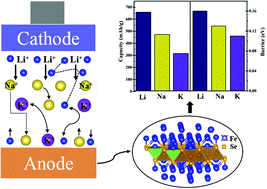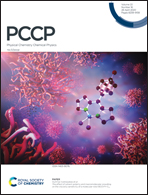Metallic FeSe monolayer as an anode material for Li and non-Li ion batteries: a DFT study†
Abstract
By means of density functional theory computations, we explored the electrochemical performance of an FeSe monolayer as an anode material for lithium and non-lithium ion batteries (LIBs and NLIBs). The electronic structure, adsorption, diffusion, and storage behavior of different metal atoms (M) in FeSe were systematically investigated. Our computations revealed that M adsorbed FeSe (M = Li, Na and K) systems show metallic characteristics that give rise to good electrical conductivity and mobility with low activation energies for diffusion (0.16, 0.13 and 0.11 eV for Li, Na, and K, respectively) of electrons and metal atoms in the materials, indicative of a fast charge/discharge rate. In addition, the theoretical capacities of the FeSe monolayer for Li, Na and K can reach up to 658, 473, and 315 mA h g−1, respectively, higher than that of commercial graphite (372 mA h g−1 for Li, 284 mA h g−1 for Na, and 273 mA h g−1 for K), and the average open-circuit voltage is moderate (0.38–0.88 V for Li, Na and K). All these characteristics suggest that the FeSe monolayer is a potential anode material for alkali-metal rechargeable batteries.



 Please wait while we load your content...
Please wait while we load your content...